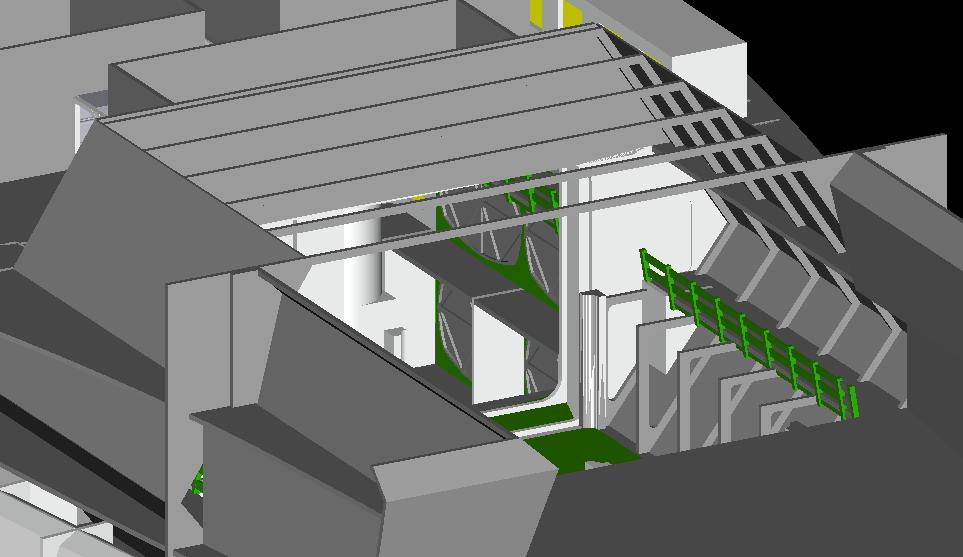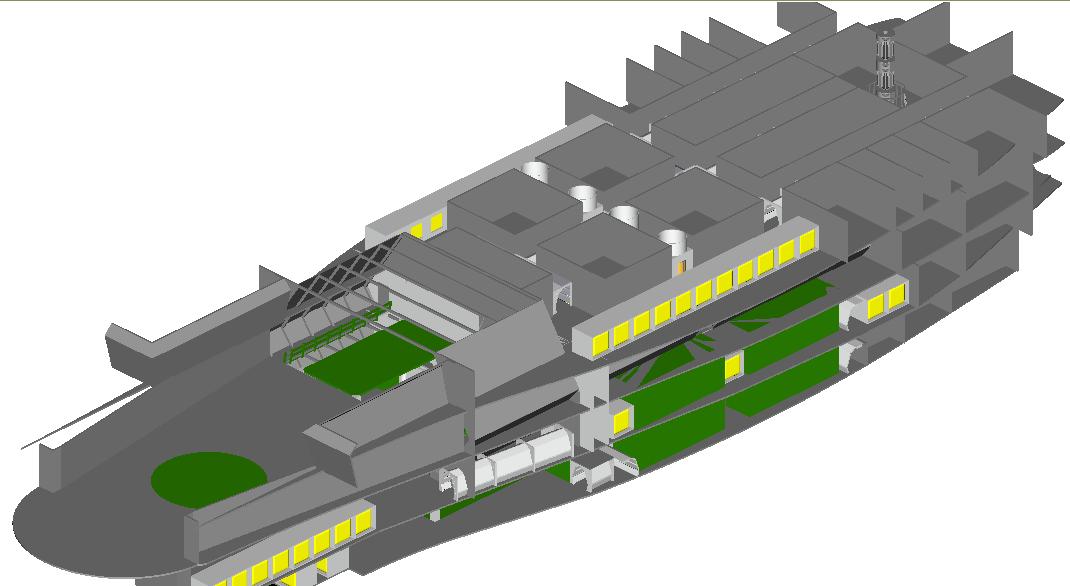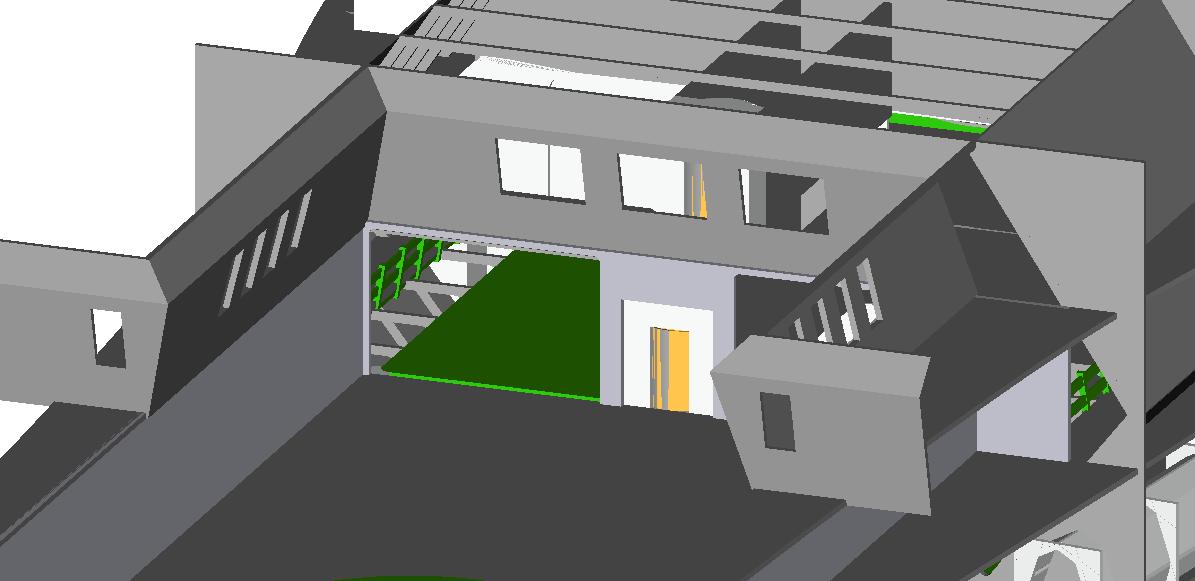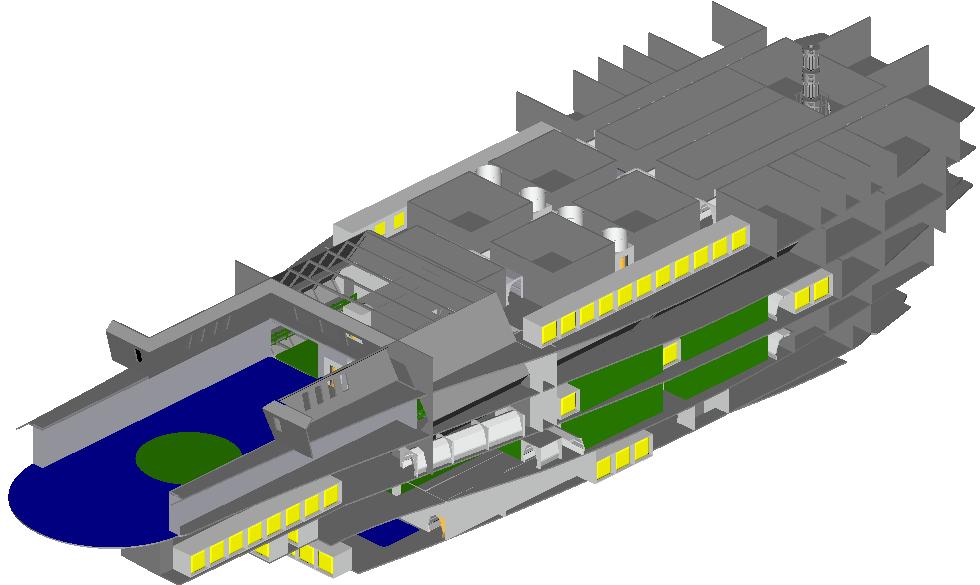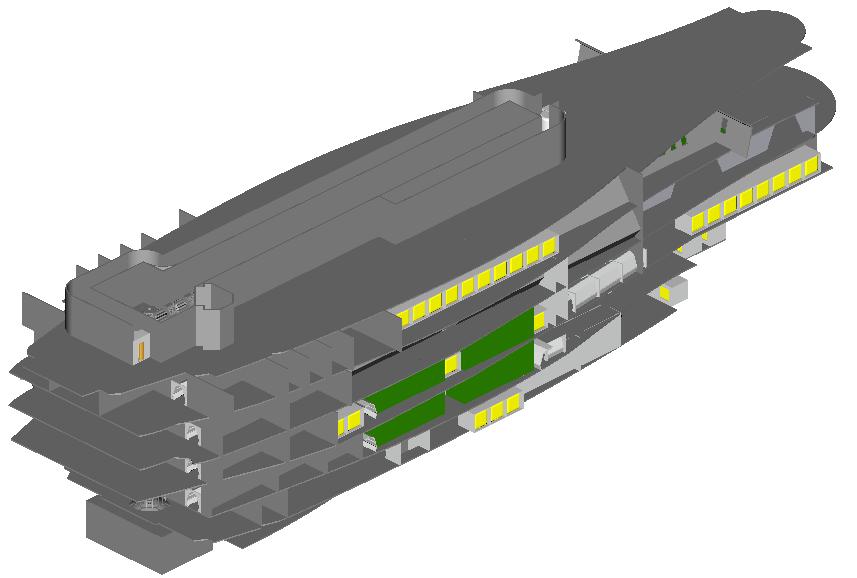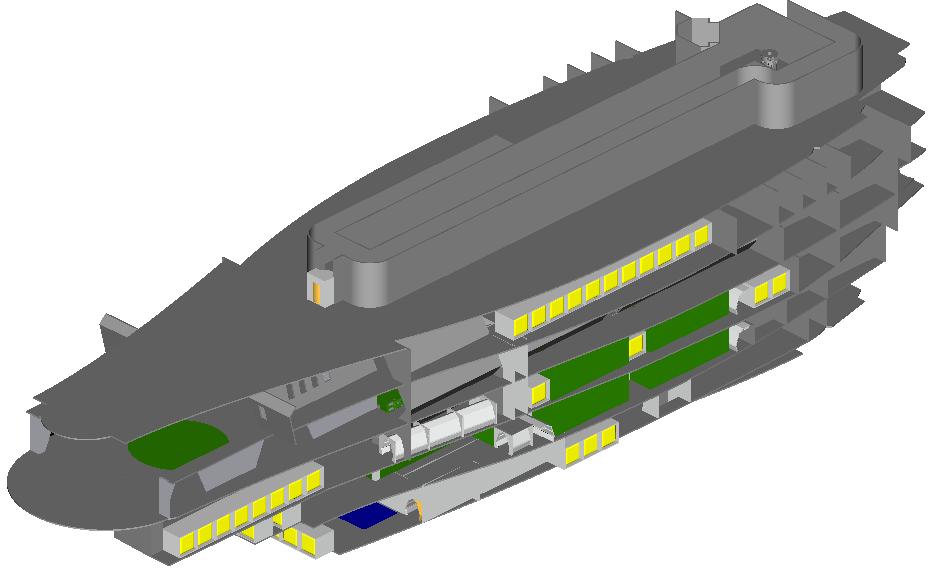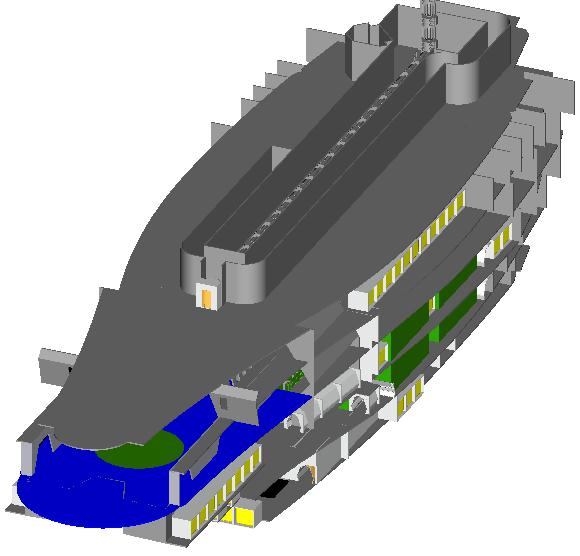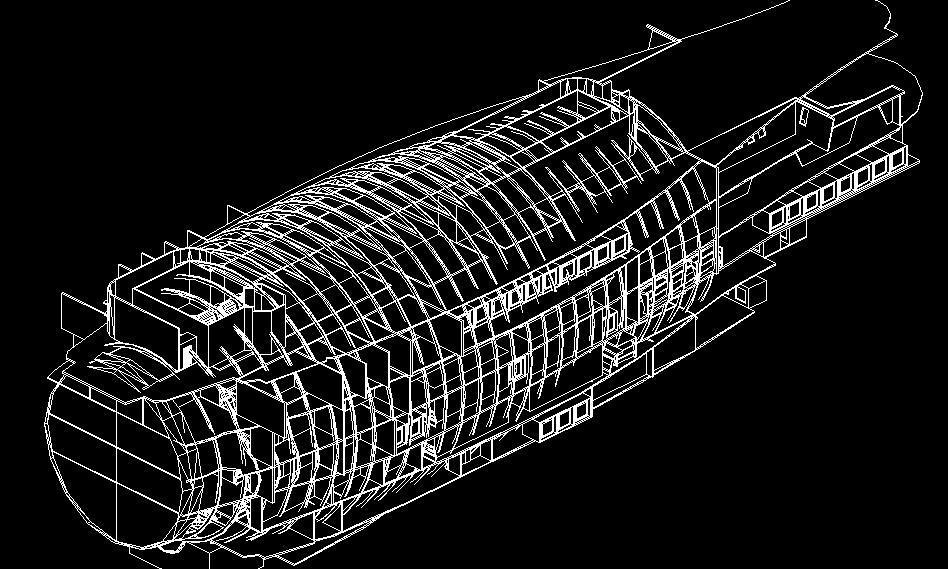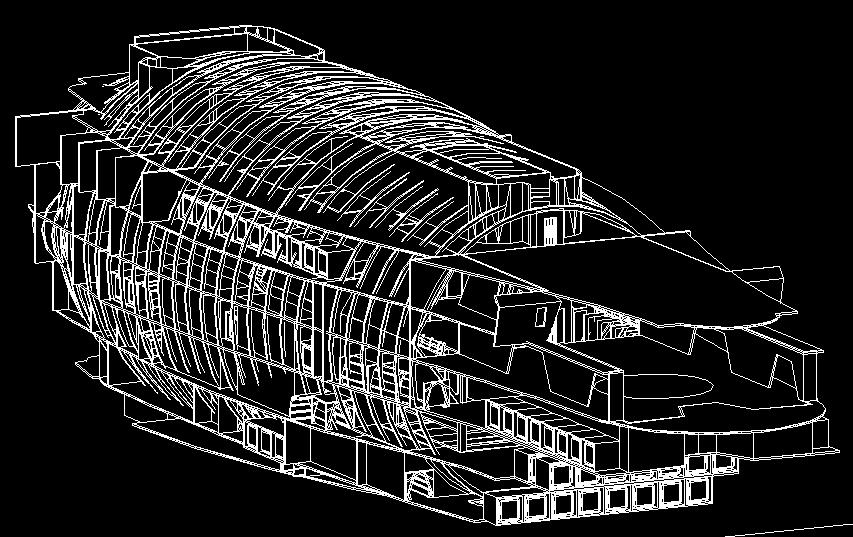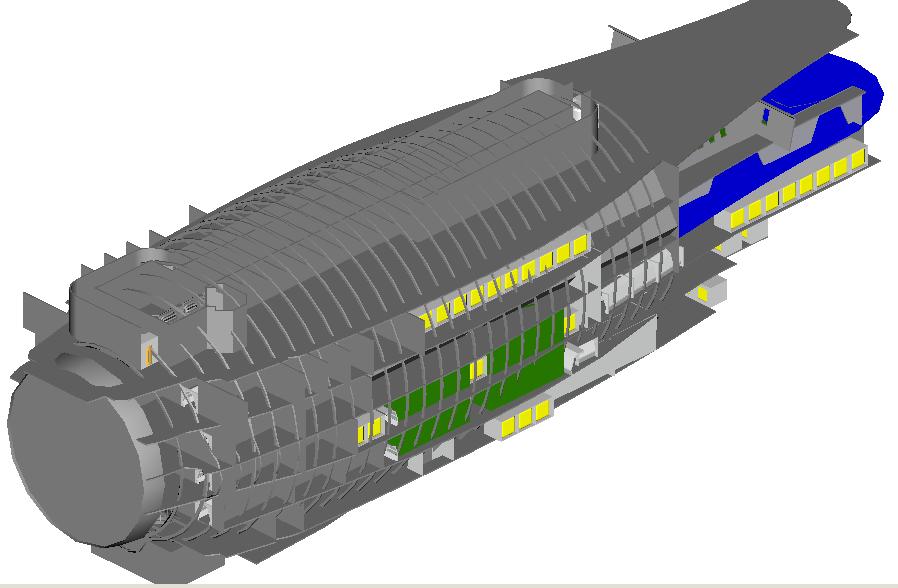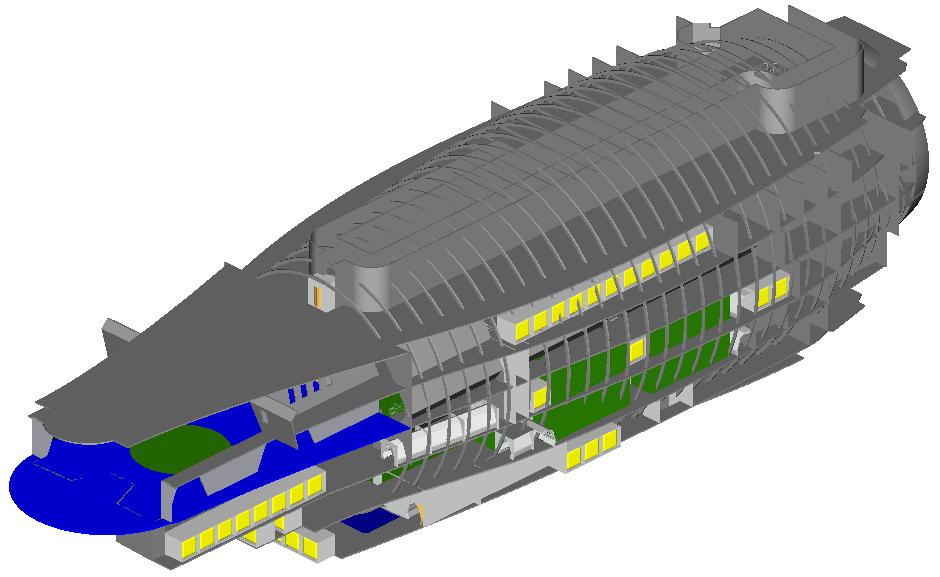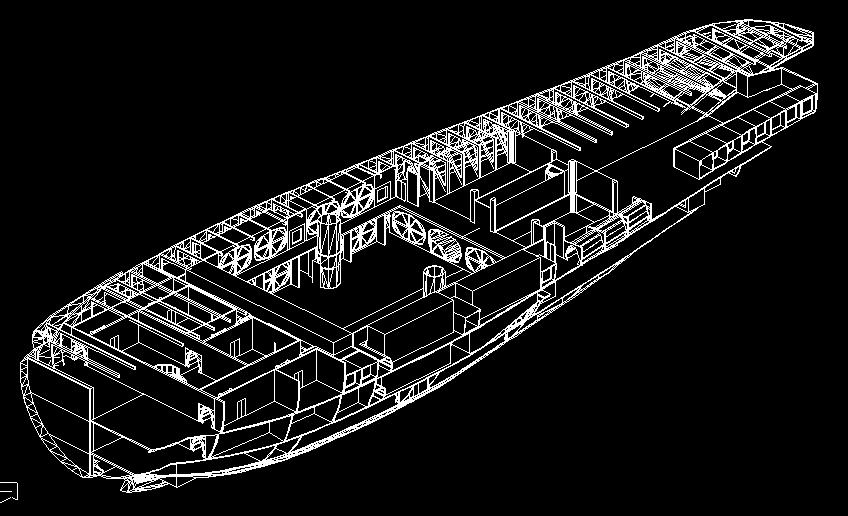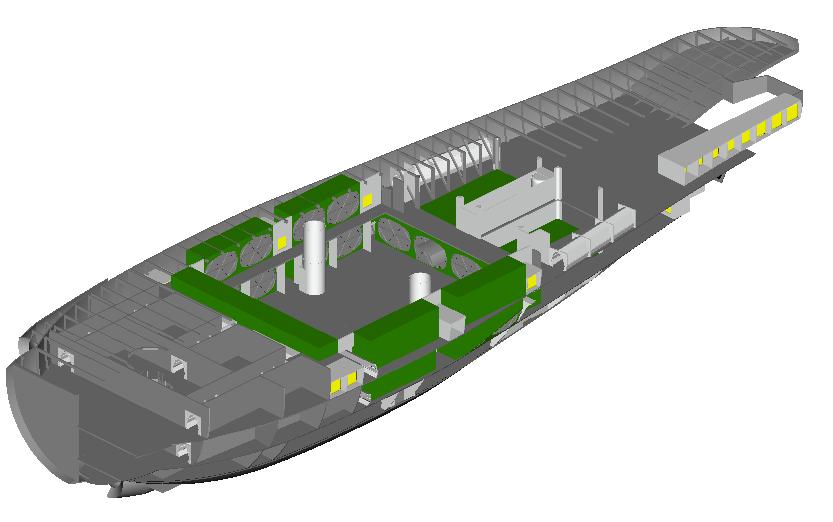Well, I know you're working from pre-existing blueprints for the most part, but I have to toss this out there...
Does a ship this size REALLY need that many lift stations? I mean... honestly... the secondary hull isn't that long. Put a single station about midway down the hull... and it's how far, again, to the most distant part of that deck?
This is a personal pet-peeve of mine... no wonder Scotty became overweight... he never had to walk more than ten steps between any room and any lift tube!

Seriously... the shuttle-bay tube seems sorta silly to me. Two main "vertical" tubes (midway down the hull, port and starboard, in the cargo deck area) seems MORE than enough, doesn't it?
I agree, except....
We see in TMP the two tubolift tubes running inside the cargo bay. There is an access point on the top level for ease of access to the docking ports. There is not one on the cargo-mid-deck, and presumably there is one on the bottom deck of the cargo bay. Additionally, the Cargo-Mid-Bay does not appear to be intended for walk-through in all states. Probert indicated he saw retractable decking that would cover all or most of the base of the bay to allow the stacking of more cargo modules. You can see from his plates that there are no guardrails lining the mid-deck like there are lining the high-deck. The top 2/3 of the cargo bay access the shuttle elevators and hangar bays. Visible on Probert's plates the "elevator shaft" runs to a deck above the cargo bay, making the shaft 3 decks high. The top two decks of the shaft access the shuttle-bay (which tops out a deck higher still). Probert indicated that there is equipment etc. between the elevators themelves that was "retracted" to open the space for cargo loading.
In TFF we see an enclosed shuttle bay, with two doors flanking a single turbo-lift entrance in the middle of the forward portion of the bay. Having this turbolift configuration works well as a compromise between the versions, and can easily be explained as a post TMP change that makes onboard operations smoother.
Under the strict TMP position*, of just the pair of shafts running through the secondary hull, there is
NO turbolift access to R-deck, and the access to S-deck is only through the cargo bay. To access the Shuttle Hangar (especially if you have supplies or equipment to move in/out for a landing party or shuttlecraft repairs) you have to go to Q-deck (Cargo High Bay) and then take a shuttle elevator down, or find a "jeffries tube" or ladder/stairway connector. Viable, but certainly not ideal. Adding a Turbolift between the elevators makes sense, allowing access to the Shuttle Hangar for easier/faster movement.
For practicalities sake, I have to add at least one vertical tube to the secondary hull, either forward or aft of the cargo bay (or I have to add a lift station to the Cargo Mid Bay). In TFF we see a lift station midline forward in the shuttle bay, presumably between the shuttle elevators. This fits well with the other placements, and I find is a reasonable comprimise between the two depictions. R-deck is still served limitedly - the only access points are the ladders/one-man-lifts in Engineering, any other "Jeffries tubes" I add later (I will always provide a non tubo-lift way to get through the ship), and the lift station in the hangar (below the shuttle-bay). I would like to add a forward access point for R-deck, but don't see a good way to do it without having turbolifts running everywhere. The lifts I have depicted represent those we have seen in the two films (TMP and TFF), and work well from a practicality standpoint. Adding another would, I feel, be overkill.
*Of course, under strict TMP position, the hull needs to be almost twice as wide to permit the corridors visible extending latterally away from the cargo bay to connect to something other than the outer hull. That Cargo Bay is a sizeable volume in the middle of the secondary hull. Connected with the Shuttle Hangars and Shuttle Bay, it is quite simply the largest contiguous (even if it can easily be compartmented) volume on the ship, by far. It consumes MOST of the volume of the secondary hull, and under a capacity load, I would see contributing very nearly a plurality of the mass of the ship.
This of course begs the question: What is the cargo loadout of a Constitutuion Class Starship at 1) the start of a 5-year mission? 2) the middle of said mission? 3) at the end of the mission? The designers obviously included a massive cargo capacity, what was the intended use?

 I've drawn schematics in Autocad Lite 97 but I don't know if they are
I've drawn schematics in Autocad Lite 97 but I don't know if they are 
